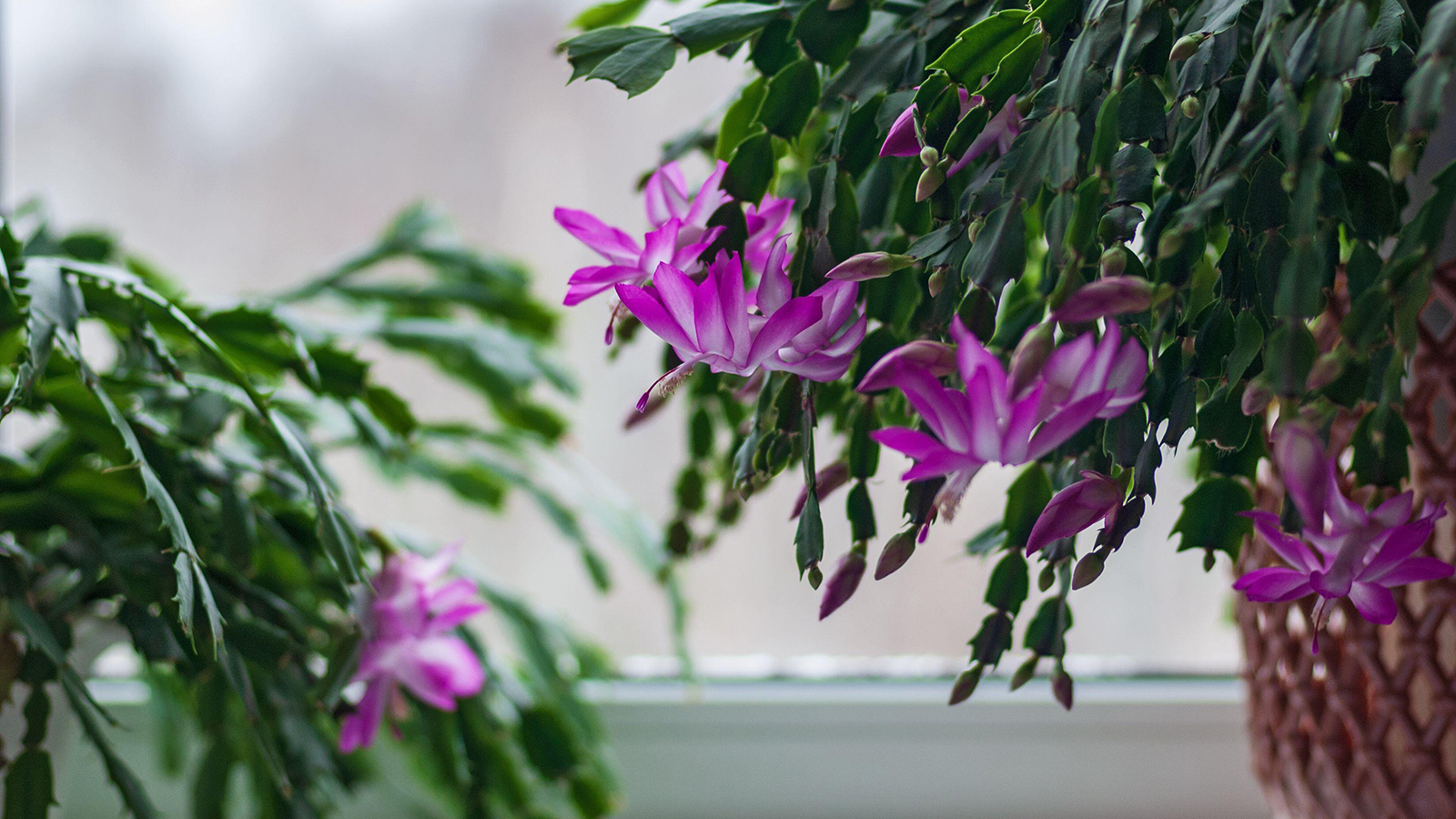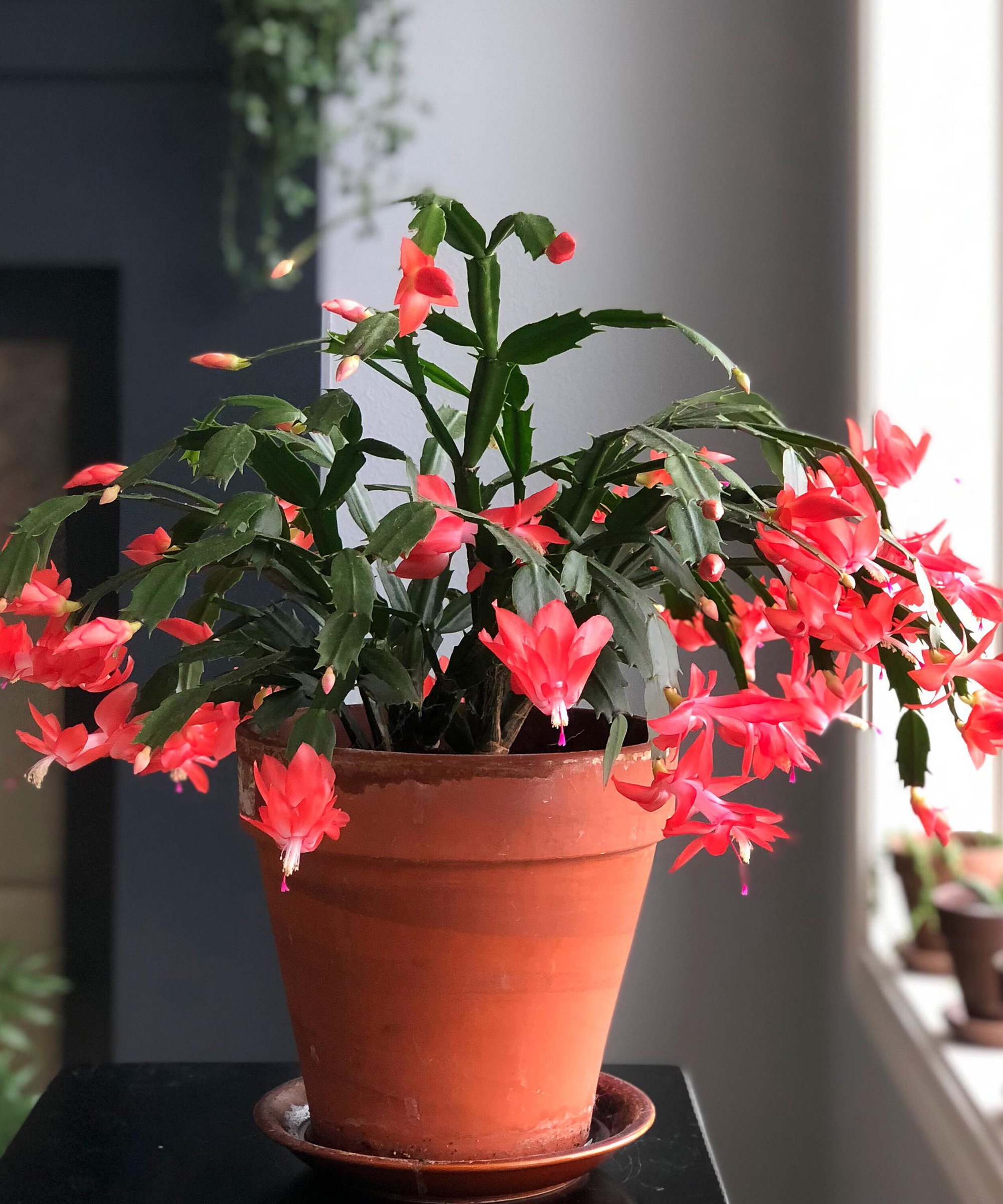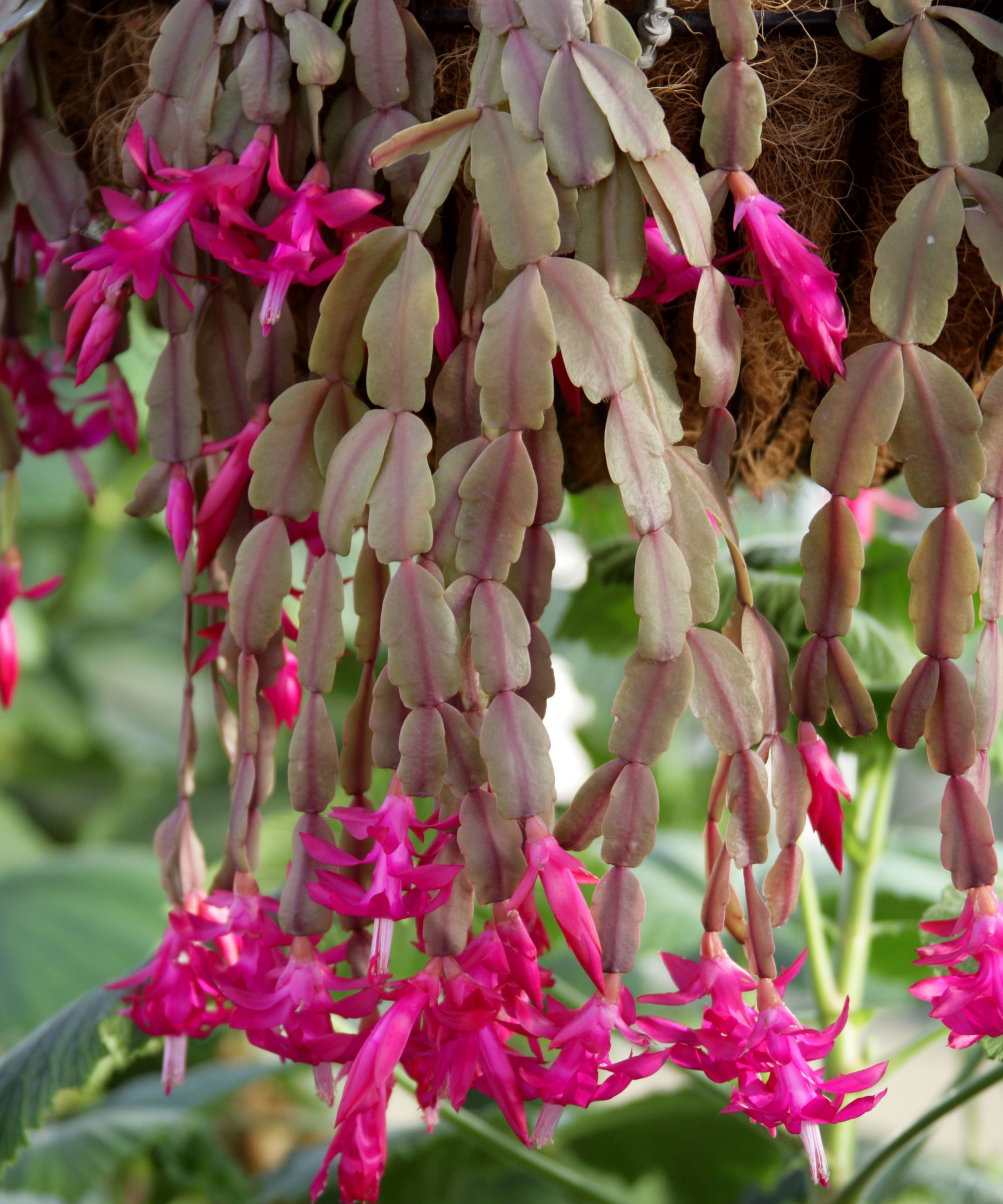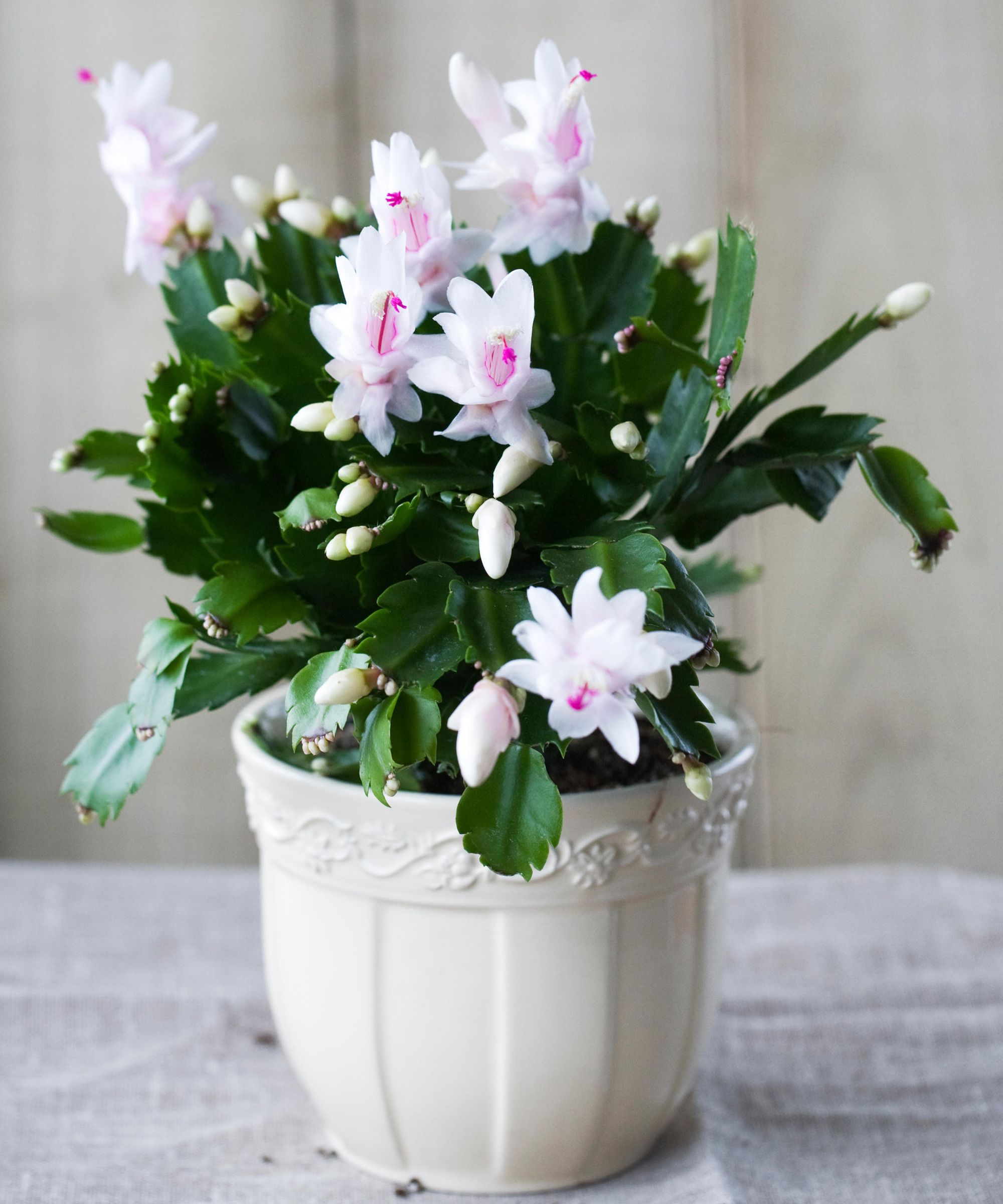
Christmas cacti, otherwise called schlumbergera, are known for their trailing leaves and vibrant blooms that flower around the festive season. Coming in an assortment of colors, including red, pink and white, their flowers face downwards like bursting droplets, creating a beautiful silhouette.
You might be confused and concerned if you notice your Christmas cactus leaves turning purple: a stark contrast to their usual green color. But the color change in your leaves is purely your plant asking for help.
We spoke to two tropical plant experts to learn why a Christmas cactus may be developing purple leaves, what plant owners can do to help their cacti, and how better Christmas cactus care can prevent purple leaves in the future.
4 causes for Christmas cactus leaves turning purple
1. Too much sunlight exposure

Although cacti tend to thrive in a sunny environment, getting too much direct sun can lead to your Christmas cactus developing purple leaves.
Ofra Gaito, CEO of plant company Verdant Lyfe, says, 'Giving your Christmas cactus too much direct sunlight, especially during already hot summer months, may be the reason that its leaves are beginning to turn purple on the edges.'
Christmas cactus leaves that are only just beginning to purple have every ability to turn back into their normal green state if placed in a less sunny area of your home. However, if all of the leaves on your Christmas cactus are turning limp or purple, it might be too late to save.
If your Christmas cacti live on a windowsill, why not consider moving them onto a shaded patio during the height of the midday sun? They can later return to their usual spot to enjoy the rest of the daylight.
Alternatively, you could invest in a UV blocking film to go over the windows of your home, such as the BDF window film from Amazon. This film is clear, so won't obstruct your view outdoors, and it absorbs some of the heat from the sun before it reaches the leaves of your plant.
2. Crowded roots

If your Christmas cactus is still in the small container you first started growing it in, it likely hasn't got sufficient space to continue to thrive. Keeping your cactus in too small a pot can lead to the roots becoming crowded, and they will struggle to absorb adequate nutrients to maintain healthy green leaves.
Alexandra Moreno, tropical plant and palm expert at Atlanta Palms, says, 'Over time, a Christmas cactus may outgrow its pot, causing the roots to become crowded. When the roots don't have enough space, they struggle to absorb nutrients properly, which can cause the leaves to turn purple. To resolve this, repot the cactus into a larger container with fresh soil, giving the roots room to breathe.'
When repotting, save your hands by wearing gardening gloves, such as the gorgeous Heirloom garden arm saver gloves from Anthropologie. You can also infuse new potting mix, such as the Harris premium succulent and cactus potting mix from Amazon, into your fresh soil as it's specifically designed to provide cacti with the essential nutrients they need.
3. A lack of magnesium

Magnesium is a vital nutrient for Christmas cacti. Without adequate levels of magnesium in your soil plants can't produce enough chlorophyll - a necessity for the creation of strong, green leaves.
'Christmas cacti require more magnesium than most plants,' says Ofra. 'It's the nutrient they most often lack, so applying a magnesium fertilizer mixture once a month will help to stop your leaves from discoloring.'
The liquid magnesium sulfate from Amazon is a quick, easy way to ensure that your Christmas cactus is never lacking the nutrients is needs. Just be mindful not to add too much: follow the instructions on the bottle and remember to dilute the solution with water before treating your Christmas cactus.
4. Temperature stress

Although Christmas cacti are generally easy to care for, the one thing they are fussy about is temperature. Too cold and drafty, or too hot, and you may see your Christmas cactus leaves turning purple.
'Christmas cacti are definitely sensitive to extreme temperatures,' says Alexandra. 'If the plant is exposed to either too much heat or cold, it can become stressed, leading to purple leaves.'
To resolve this, make sure your Christmas cactus is sat in a stable environment: one with access to sunlight that's bright but indirect, away from drafts of cold air, cold window panes and heaters. A Christmas cactus typically likes being kept in temperatures between 65–69°F during the day and 60–65°F at night.
There are two easy ways to test the environment your Christmas cacti is going to live in. Firstly, you can try hanging a piece of paper where the plant will go to test for drafts. If there's any kind of draft or surplus moisture, the paper will blow around and become damp.
You could also invest in a combined-setting moisture meter, such as the 4-in-1 soil moisture meter digital plant display from Amazon. This handy tool inserts into the soil of your Christmas cactus pot and will tell you all kinds of information including the soil's moisture level, if the plant is getting enough sunlight, and the plant's temperature.
It's recommended to leave this in your plant pot until your Christmas cactus is turning green again, and to routinely check how it is doing every two weeks.
Once you're well-versed in the fussy side of Christmas cactus care, you will be able to grow this gorgeous plant confidently. Why not consider learning how to propagate a Christmas cactus as a next step? They would make wonderful holiday gifts for friends and family.







